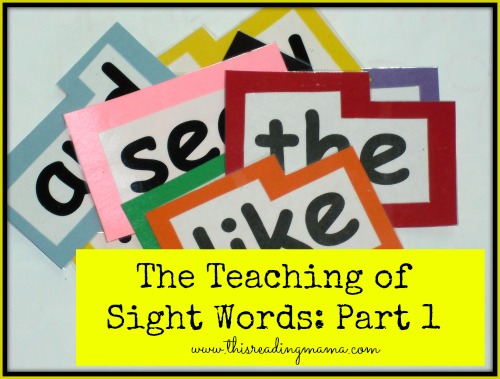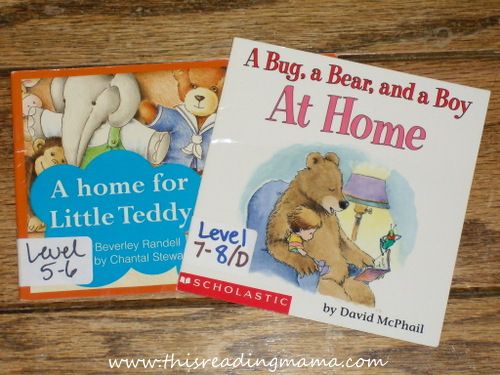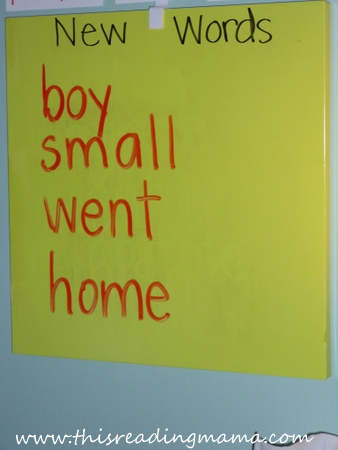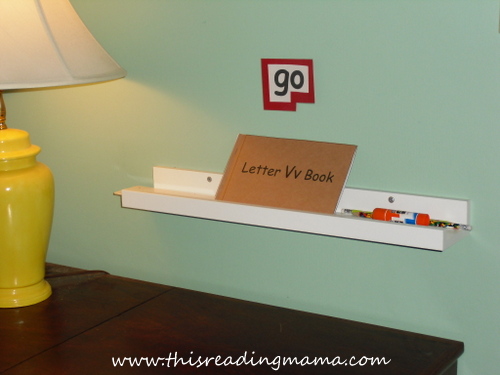Blog What Order to Teach Sigh Words to Prek

I get many questions regarding the teaching of sight words {often called high frequency words}: Are they really needed? If so, why? In what order should they be taught? How do you help them to "stick"? How do you hold kids accountable to spelling them correctly? I thought I'd take a couple of weeks to answer these questions by showing you how I have taught sight words as a classroom teacher, reading tutor, and now as a homeschooling mama.
What is a Sight Word?
Simply put, sight words are the commonly used words in our language {the, of, have, two, etc.}. Some of the common sight words cannot be sounded and out and therefore need to be learned by sight as whole word {such as was, the, or of}.
While it is a great practice to help kids see that many sight words relate to phonics, sounding out the more phonetic sight words {and, red, to, etc.} should not be a child's first line of defense. Because these words are so common, knowing them by sight {within one second of seeing the word} is preferred to increase fluency and support comprehension.
Sight words are only part of a balanced reading program. I am a firm believer that kids need both phonics {I love word study} AND sight words.
These two, of course, don't stand alone. Word and phonics knowledge have to be applied to real reading and writing to be of any use. With that being said, sight words ARE vitally important because they make up so much of what we read {more about that in a minute}.
Sight Word Lists
The two most commonly used sight word/high frequency word lists are:
1. Dolch Words– 220 commonly used words, listed in order by grade level {PP through 3rd grade}. I lean towards the camp of reading teachers who feel the entire list should be familiar by the end of 1st grade.
2. Fry's List– I honestly prefer Fry's list, probably because that's the list I used in my teacher training as well as in the classroom. It's a little more in-depth than the Dolch word list, with 100 words on each list {10 words on each list}. Fry's first 100 words alone make up over 50% of what we read! Yes, 50%. That's A LOT of words! It's no wonder that they are important!
How Many Sight Words Should I Introduce?
Introduction of sight words depends mainly on the developmental stage of your child. Age can also play a factor, but don't let that be your deciding factor.
The developmental stage of your child should be your main indicator. For example, NJoy started showing me he was ready for sight words at the age of three. He was highly interested and knew all of his letters and sounds. Your child may be in the 1st grade, but in the same developmental stage as my son was at three. Pay attention to this. For more information about teaching sight words in a developmental way, please visit my post: When Sight Words Just Don't "Stick".
With a young reader, it is good to only introduce one to two sight words at a time. If you introduce more than one at a time, the words need to be visually different {the, of= yes! / is, in = no!}. When kids are first learning sight words, they can get them easily confused and having two or more words that are visually the same makes it all the more confusing to remember them.
As kids grow in their reading, 5-10 sight words might be more appropriate. The general rule I follow is: if the words aren't "sticking", I'm going to fast for my child.
Connecting Sight Words to Real Reading and Writing
I don't always pick the sight words in order {referring to the order of the Dolch or Fry's list}. While I typically don't pick the 99th word first, I start with a text. I have quite a collection of beginning readers. I've collected books over the years at used book stores, yard sales, and from retiring teachers.
When my kids are just starting out, I began with predictable texts {much like the emergent readers I've created for Reading the Alphabet}. Predictable text repeats the same phrase over and over in the book; usually with a little variation on the last page. For example, I might notice that the text says, "I like to _____…I like to_____…" on each page. Naturally, I would pick like and to as the sight words for that week or time period.
As a classroom teacher, reading tutor, and now homeschooling mom, this is my thought process when I'm looking through a book and choosing sight words to study:
- Is this text on the child's level? Are there too many words he doesn't know? Are there a few words he doesn't know? This is also important, as new words and new decoding strategies help kids grow as readers. I don't want to pick a book in which he knows every single word. It would be too easy. {I have all my books leveled and organized in boxes by their level, something I did when I first starting tutoring.}
- What sight words on the list {Dolch/Fry's list} have not been introduced, yet?
- Are there any reocurring sight words that I could pull from the story/stories for the week {that match words on the list}? If there are too many sight words I'd need to teach him before he could read the text, I know the text will probably be too hard for him.

These two books made a great pair as they introduced some of the same words.
I REALLY like to pull the words from the texts and use those for the week because it connects learning words to reading. The purpose of learning these sight words anyway is to comprehend text. If I decide on the sight words, then have him read texts all week that either don't have the sight words in them or they are few and far between, his literacy instruction is choppy and disconnected.
As he's learning new words, I also like to point them out when I read text aloud or when they appear in authentic situations, like in a cookbook or road sign. Of course, these sight words naturally come up when writing and spelling, too {more about that next week in Part 2}.
Where do I put the Sight Words?

I have a special board in our schoolroom that "hosts" the new words for the week. They stay on the board all week. We play sight word games with the words and refer to them frequently when reading and writing. {This were his words on the board the week I introduced the two books mentioned in the picture above.}

With NJoy, I post his new word on the wall at his desk.
Next week {Part 2}, I plan on talking more about what do to with the sight words you've introduced once the week is over. I hope you will find it helpful!
~Becky
Blog What Order to Teach Sigh Words to Prek
Source: https://thisreadingmama.com/the-teaching-of-sight-words-part-1/